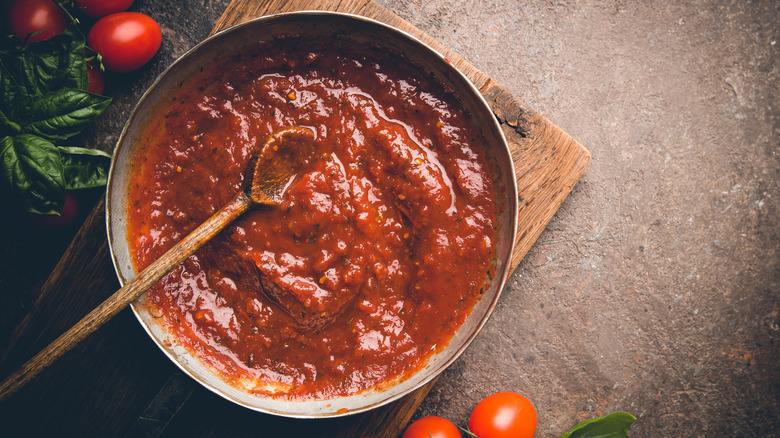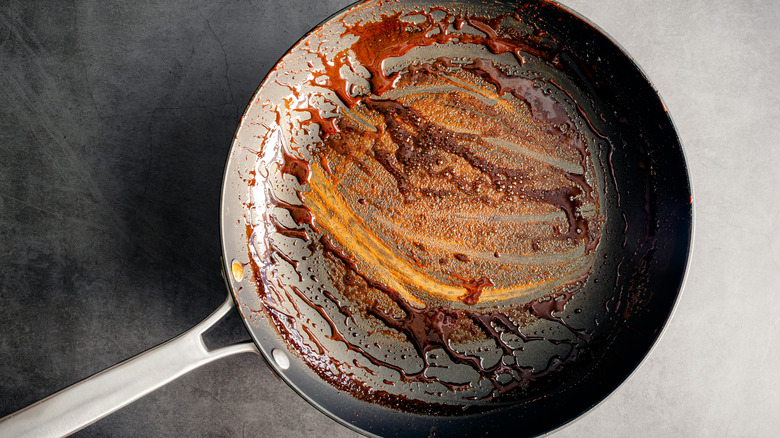The One Ingredient Everyone Has That Can Fix A Broken Sauce
Hollandaise on eggs benedict. Gravy on mashed potato. Some sauces are destined for a dish, adding that last touch of richness, flavor, and luster that defines a great meal. The art of creating sauce can be a delicate one, especially when heat and fats are present. Overmixing, too much heat, not enough fat — there's no shortage of ways a sauce can take a turn and become broken.
Of all the heartbreaks in the kitchen, this might be the one that hurts the worse. Most cooks might see a curdled, separated sauce, then immediately abandon it and start over. Making sauce is a skill that all home cooks should conquer, but it's the talent of saving a seemingly broken sauce that will make all the difference. It can be discouraging to reach this point and may seem impossible to recover, but luckily, all you need to fix a broken sauce is an ingredient you'll find in everyone's kitchen: water.
What it means to have a broken sauce
A broken sauce happens the moment a sauce becomes curdled, with visibly separated ingredients that can no longer be emulsified. The cause of this reaction lies in the way the fats and liquid interact with each while being whisked over heat. Cook's Illustrated explains that sauces can break when it stays on the heat too long and too much water evaporates since there's no longer enough water to hold the fat in suspension.
While the science is all the same, this reaction can look different depending on the sauce being made. For dairy-based sauces — like Alfredo or Hollandaise — curdling might pose more of a problem than a fat-in-water emulsion — like pan sauce made from deglazed meat dripping — where you're likely to see oil pool around the remaining separated ingredients. No matter what sauce you're making, warm water is the unlikely ingredient that could save any broken sauce.
How to save a broken sauce with water
To save a broken sauce, all it takes are a few spoonfuls of warm water. Alex Guarnaschelli, Food Network legend and chef of Butter in N.Y.C. tells People that this trick is the easiest fix to balance the excess of fatty ingredients in a sauce. "Have a chocolate or cream sauce that has separated or become grainy? My mom always added more cream or butter, but it didn't work," says Guarnashcelli. Opting for water instead of another fat works because whisking in more water aids in helping the sauce emulsify, replacing the moisture that was evaporated and re-suspend fat, reviving that shiny, creamy sauce.
Now that you know the trick to save most any sauce from breaking, you're well-equipped to tackle everything from the technically challenging French mother sauces to something as easy as ketchup. Try making creole sauce made with dark brown roux to serve alongside fried catfish or smother on any meats, or Madeira sauce for an elevated take on gravy.


